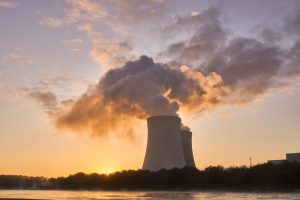Understanding Europe’s Embrace of Nuclear Energy
As the European Union seeks solutions to climate change, nuclear energy emerges as a powerful ally. This form of energy is capable of providing vast amounts of electricity with minimal carbon emissions. Historically, Europe’s stance on nuclear power has been ambivalent, with incidents like the Chernobyl disaster casting a long shadow. But with advancements in safety protocols and a dire need to counteract climate change, this perspective is undergoing a dynamic shift.
The Rise of Nuclear Energy in Europe
From France’s pioneering efforts in the 1970s to Finland’s recent nuclear developments, the continent has witnessed a steady growth in its nuclear infrastructure. Data suggests that about 25% of electricity in the EU is produced by nuclear energy, making it an indispensable part of the region’s energy matrix. Countries such as France and Hungary have embraced this resource wholeheartedly, with nuclear energy contributing to 70% and 50% of their respective national electric grids.
Factors Driving the Nuclear Renaissance
- Climate Goals: The EU’s commitment to reduce greenhouse gas emissions by 55% by 2030 has spurred nations to reconsider nuclear energy.
- Energy Security: Amid geopolitical tensions and energy supply disruptions, nuclear power stands out as a reliable and local resource.
- Technological Advancements: Modern reactors are designed with enhanced safety features, drastically reducing risks associated with nuclear energy.
Deciphering Public Opinion on Nuclear Safety

Public trust plays a pivotal role in the success and acceptance of any energy resource. Over the decades, the perception of nuclear energy has seen its highs and lows. While some Europeans appreciate its low-carbon benefits, others remain skeptical, fearing potential mishaps.
Highlights from Recent Surveys
A 2020 Eurobarometer survey provided intriguing insights into public opinion on nuclear safety:
- General Trust: Approximately 60% of Europeans believe nuclear power can be safe if managed properly.
- Country Specifics: Trust levels vary with 74% of Swedes expressing confidence in nuclear safety, while only 48% of Austrians share the sentiment.
- Youth Perspective: Younger generations, having grown up in a world more conscious of climate change, are generally more favorable towards nuclear energy than their predecessors.
Unearthing the Concerns
For many, memories of past nuclear accidents remain vivid, breeding apprehension. Concerns often revolve around:
- Waste Management: The long-term disposal of nuclear waste is a pressing concern for many Europeans.
- Plant Safety: With some reactors aging, questions arise about the longevity and safety of existing infrastructure.
- Natural Disasters: Events like the Fukushima incident have spotlighted the vulnerabilities of nuclear plants to natural calamities.
Steps Towards Building Trust in Nuclear Safety Protocols
For nuclear energy to claim its rightful place in the EU’s sustainable future, building public trust is paramount. The EU and its member states are taking proactive measures to ensure safety and to communicate these efforts transparently.
Standardising Safety Protocols
The European Nuclear Safety Regulators Group (ENSREG) plays a critical role in establishing harmonized safety standards across the union. From stress tests on reactors to periodic peer reviews, ENSREG ensures that member states maintain the highest safety benchmarks.
Engaging Communities in the Dialogue
Transparent communication is key. Many European nations are actively involving their citizens in discussions about nuclear energy projects. For instance, France’s National Public Debate Commission facilitates dialogues between experts, policymakers, and the public, fostering a culture of openness and mutual trust.
The Road Ahead for Nuclear Energy in Europe
As the urgency to mitigate climate change intensifies, the role of nuclear energy in Europe’s energy landscape becomes ever more crucial. With rigorous safety protocols in place and a commitment to transparent communication, there’s ample potential for nuclear power to not only meet the EU’s energy demands but also to earn the trust and endorsement of its citizens.
Building Bridges through Education and Outreach
To make an informed choice, the public needs access to unbiased and comprehensive information. Knowledge is not just power; it’s the foundation of trust. With this understanding, Europe is working diligently to educate its populace.
Collaborative Educational Initiatives
From school programs to community workshops, there’s an increasing emphasis on nuclear education. These programs aim to demystify nuclear energy, explaining its workings, benefits, and safety protocols. By integrating nuclear studies into mainstream education, Europe hopes to create a generation more informed and open to the possibilities of nuclear power.
Nuclear Energy Museums and Tours
Several European countries, like Sweden with its Barsebäck Nuclear Power Plant Visitor Centre, invite the public to explore nuclear facilities. These guided tours aim to showcase the stringent safety measures in place. Additionally, interactive museums in places like France delve deep into the history, science, and future potential of nuclear energy, offering an immersive learning experience.
Enhancing Technological Advancements for Safer Operations
As the nuclear sector evolves, so does its technology. With a focus on safety and efficiency, the European Union supports research and innovation to further enhance nuclear operations.
The Role of Generation IV Reactors
These are the next evolution in nuclear reactor technology. Designed with an emphasis on safety and sustainability, Generation IV reactors promise enhanced performance, reduced waste, and increased efficiency. With several European nations showing interest, these reactors might play a significant role in the continent’s energy future.
Digital Transformation and Nuclear Safety
The digital age has brought with it tools that can significantly boost nuclear safety. From AI-driven monitoring systems to predictive maintenance using big data analytics, these technological advancements promise not just efficiency but heightened safety standards.
Embracing a Brighter, Nuclear-Powered Tomorrow
Nuclear energy, with its promise of sustainable and substantial power, has the potential to be a linchpin in Europe’s energy strategy. By prioritizing safety, transparency, and public engagement, the EU is not just securing its energy future but also ensuring that this future is built on the bedrock of public trust and acceptance.

